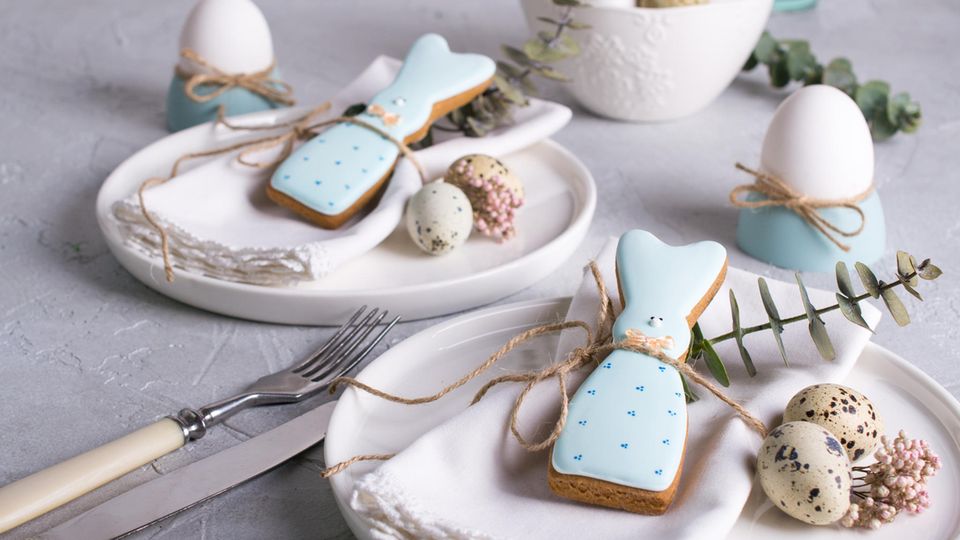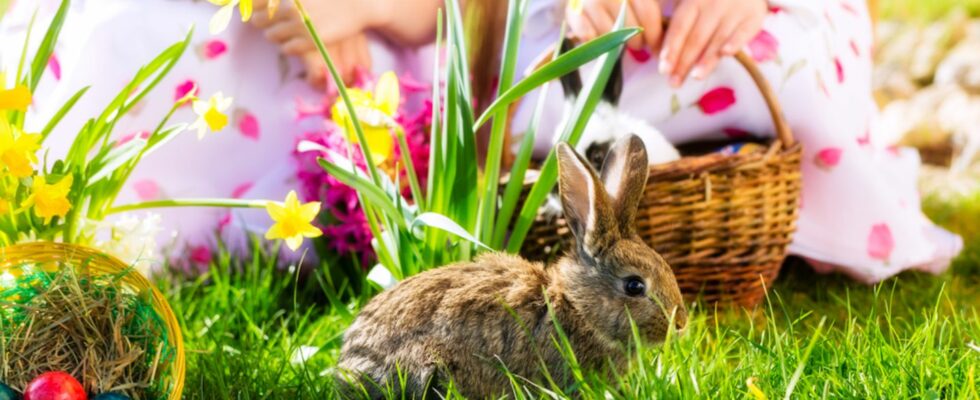Easter customs
11 popular customs and their meanings
© Kzenon / Shutterstock
At Easter there are not only delicious chocolate eggs, but also a variety of Easter traditions. Here you can get an overview of the most popular customs and their meaning.
Easter is a celebration for the whole family where we eat delicious Enjoy Easter recipes and make your own Easter decorations together. Above all, there are numerous Easter customs, some of which have a long tradition. Here are the most famous Easter traditions.
Easter custom #1: Dyeing Easter eggs
Dyeing Easter eggs and painting Easter eggs is a common Easter custom. It is not entirely clear whether the origin of the custom lies in the Christian faith, as the dyeing of eggshells is older than the Christian tradition. However, the early Christians used eggs to symbolize the resurrection of Jesus and colored them exclusively red to indicate the blood shed through death.
Today we are having a lot of fun with this DIY project at Easter and decorating our Easter bushes and Easter baskets with it. By the way, you can find all the tips for blowing out eggs for Easter here.
Easter custom #2: Looking for Easter eggs
The custom of egg hunting was first mentioned in writing in the 17th century and children still have a lot of fun doing it today. However, the custom of bringing eggs existed earlier; here it was mainly birds that brought joy to the children. However, there are several origin theories for egg hunting and egg bringing.
Easter custom #3: The Easter Bunny
The Easter bunny is probably THE symbol for Easter. There are also numerous variations on the origin of the Easter bunny. You can find out the whole story here: Easter Bunny Origin and Meaning.
Easter custom No. 4: Easter water
Easter water is a symbol of life and fertility and is also known as blessed baptismal water on the Easter Vigil. The Easter custom comes from pagan times, when it was believed that water was special Healing powers owned. So on the morning of Easter Sunday all the women went to a stream to bathe or fetch water. (Hence the name: Easter water.) It was said that Easter water would fertility and beauty achieve.
Easter custom no. 5: The Easter fire
The custom of the Easter fire has both a Christian and pagan background. In Germany, the Easter fire is sometimes lit on Holy Saturday, Easter Sunday or even Easter Monday. According to Christian belief, the Easter fire symbolizes the resurrection of Jesus. According to pagan custom, the Easter fire drives away winter and the ashes of the fire are scattered over the fields. Therefore the Easter fire is also a fertility ritual.
Easter Custom No. 6: The Easter Wheel
The Easter wheel is also part of the tradition of the Easter fire. When the fire has almost burnt down, wagon wheels wrapped in straw are lit on the Easter fire. These are then rolled through the town and are intended to drive away the winter. The Easter wheel symbolizes the sun.
Easter custom number 7: The Easter candle
The Easter candle represents life and occurs in Roman, Jewish, Greek and Christian traditions. The custom originated in Christianity in the 4th century. The Easter candle represents Jesus Christ, who rose from the dead. The candle is lit at the Easter fire on the night of Holy Saturday to Easter Sunday. Easter candles are usually only lit in churches. All community members light their own candle at the Easter candle. At the end of the service, the candle remains on the altar and is lit again and again until Pentecost.
Easter Custom No. 8: The Paschal Lamb
The Easter lamb has a long tradition in the Christian faith and represents innocence. Today we encounter the Easter lamb primarily in cake form. You can find everything about the tradition and delicious recipes for baking here: Easter lamb: meaning and tradition. By the way: your Easter brunch also includes delicious Easter bread – simply irresistible.

Easter custom No. 9: The Easter riding
One of the most famous Easter customs is the Easter riding (also called Easter ride). This Easter custom has a Christian tradition. This is about the Message about the resurrection of Christ spread and therefore takes place on Easter Sunday. Both riders and horses are blessed.
Easter custom No. 10: The Easter walk
The Easter walk is a custom that is practiced either on Easter Sunday or Easter Monday. Many families plan a trip into nature and enjoy the contemplative time. Johann Wolfgang Goethe already wrote about a long Easter walk in “Faust – Tragedy Part One”. This was about the to welcome spring.
But actually walking outdoors has and does have a religious background Emma exit called. It commemorates the march to the city of Emmaus, during which two disciples of Jesus Christ were unable to perceive the depiction of Mary Magdalene’s resurrection.
Easter Custom No. 11: Throwing Eggs
An Easter custom that rarely occurs anymore: In various regions of Germany (especially in the north), boiled eggs are taken along on a walk and used for Easter games. Egg throwing is particularly popular, in which the eggs have to be brought to a target in as few throws as possible.
So, which of the Easter traditions do you like best?
We also have on ours Pinterest board delicious Easter recipes put together for Easter.
